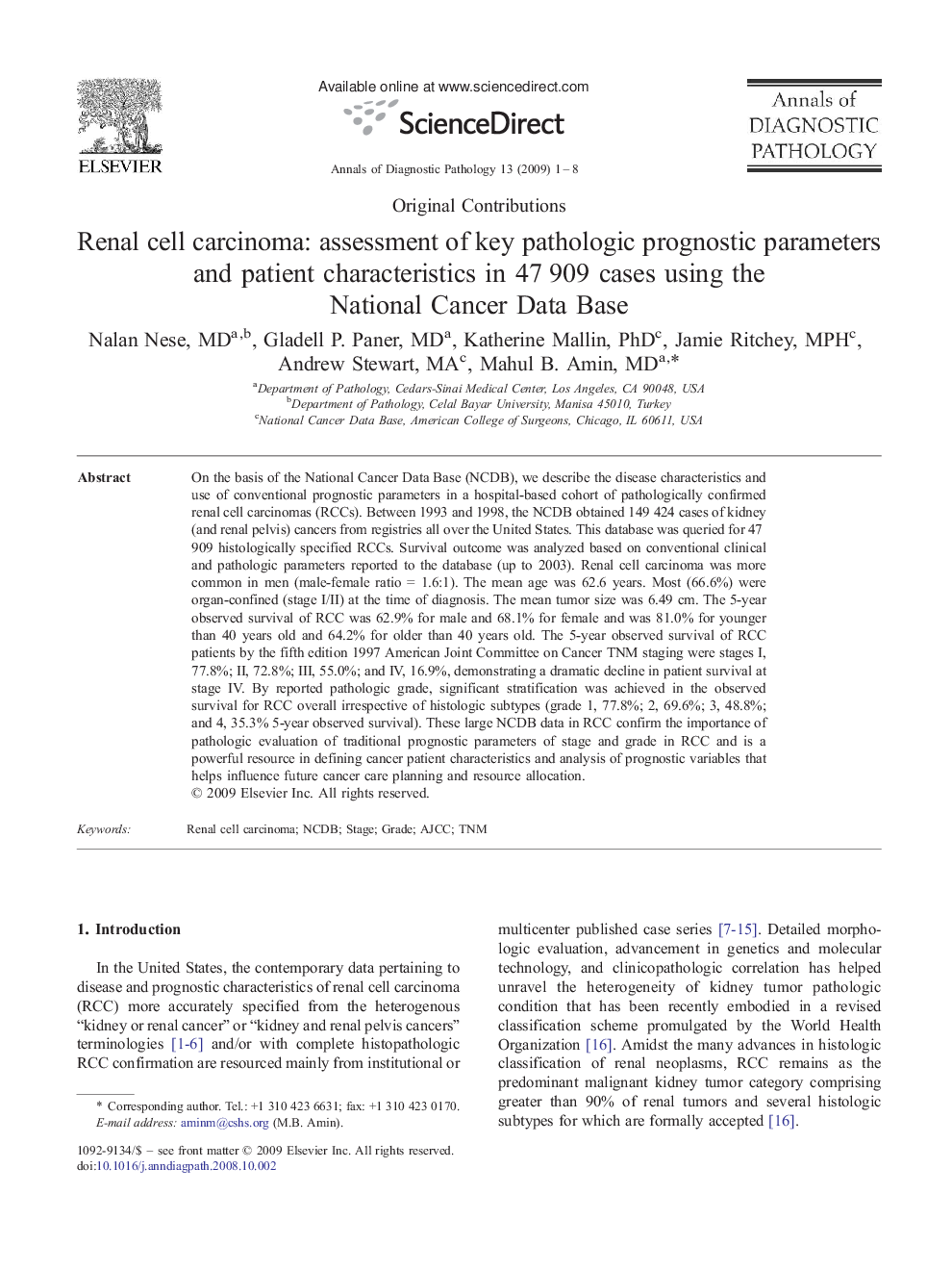| Article ID | Journal | Published Year | Pages | File Type |
|---|---|---|---|---|
| 4130452 | Annals of Diagnostic Pathology | 2009 | 8 Pages |
On the basis of the National Cancer Data Base (NCDB), we describe the disease characteristics and use of conventional prognostic parameters in a hospital-based cohort of pathologically confirmed renal cell carcinomas (RCCs). Between 1993 and 1998, the NCDB obtained 149 424 cases of kidney (and renal pelvis) cancers from registries all over the United States. This database was queried for 47 909 histologically specified RCCs. Survival outcome was analyzed based on conventional clinical and pathologic parameters reported to the database (up to 2003). Renal cell carcinoma was more common in men (male-female ratio = 1.6:1). The mean age was 62.6 years. Most (66.6%) were organ-confined (stage I/II) at the time of diagnosis. The mean tumor size was 6.49 cm. The 5-year observed survival of RCC was 62.9% for male and 68.1% for female and was 81.0% for younger than 40 years old and 64.2% for older than 40 years old. The 5-year observed survival of RCC patients by the fifth edition 1997 American Joint Committee on Cancer TNM staging were stages I, 77.8%; II, 72.8%; III, 55.0%; and IV, 16.9%, demonstrating a dramatic decline in patient survival at stage IV. By reported pathologic grade, significant stratification was achieved in the observed survival for RCC overall irrespective of histologic subtypes (grade 1, 77.8%; 2, 69.6%; 3, 48.8%; and 4, 35.3% 5-year observed survival). These large NCDB data in RCC confirm the importance of pathologic evaluation of traditional prognostic parameters of stage and grade in RCC and is a powerful resource in defining cancer patient characteristics and analysis of prognostic variables that helps influence future cancer care planning and resource allocation.
